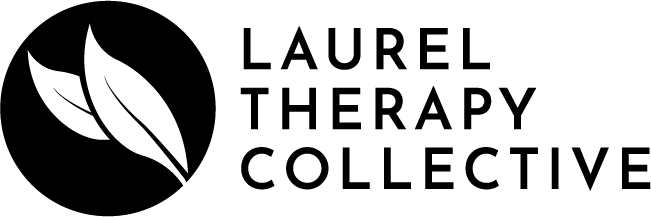Toxic Positivity: The Bright Side That Can Be Dark
In a world that prioritizes positivity and resilience, a darker side lurks - toxic positivity. How does this sunny attitude affect mental health, both for those who embrace it and those on the receiving end? Let's uncover toxic positivity’s telltale signs and learn how to respond to it. We'll talk about when it comes from others and when we catch ourselves succumbing to its allure. It's time to reframe our outlook and prioritize authenticity.
What is Toxic Positivity?
Toxic positivity is the relentless pursuit of a positive mindset, even in situations where it's not appropriate or helpful. It's the tendency to dismiss, invalidate, or deny authentic human emotions. It pushes out sadness, anger, and frustration, in favor of an optimistic facade. It often involves encouraging people to "look on the bright side," "stay positive," or "just be happy," regardless of their true feelings. It runs rampant in certain environments, such as fitness culture and many tech startups.
Spotting Toxic Positivity
Unrealistic Optimism
Toxic positivity tends to sugarcoat reality and downplay challenges. It promotes an unrealistic optimism that can be dismissive of real struggles.
Invalidating Emotions
It involves invalidating someone's emotions by suggesting they should be cheerful or grateful. It doesn't take into account their real feelings or circumstances.
One-Size-Fits-All Solutions
Toxic positivity relies on one-size-fits-all solutions. It assumes that positivity alone can solve every problem.
The Impact Of Toxic Positivity on Mental Health
For those who practice toxic positivity, it can create a facade that masks true emotions. This leads to suppressed feelings and potential mental health issues. On the receiving end, it can make individuals feel unheard, invalidated, and isolated. That only makes their emotional struggles worse. In essence, it's a lose-lose situation.
The Impact Of Toxic Positivity on Friendships and Relationships
Toxic positivity can really strain friendships and relationships, often causing unintended harm. When we respond to a friend or loved one's genuine struggles with dismissive positivity, we risk invalidating their feelings. This can lead people to feel unheard, isolated, or even unseen in their relationships. Over time, repeated experiences of toxic positivity can erode trust and emotional intimacy.
The person offering toxic positivity may unintentionally convey insensitivity or a lack of empathy. It creates a shallowness that isn't intended. When we embrace authenticity and empathy, our friendships and relationships can flourish. By acknowledging each other's true feelings and providing support without judgment, we create safe spaces. When emotional honesty can thrive, we all feel greater trust and build deeper connections.
Examples of Toxic Positivity
A friend loses their job and expresses their anxiety about it. You respond with, "Don't worry; everything happens for a reason!"
When grieving the loss of a loved one, someone says, "At least they're in a better place now."
Responding to Toxic Positivity
From Others:
Politely acknowledge their intentions while expressing your need to process your emotions authentically. For instance, "I appreciate your positivity, but right now, I need to feel what I'm feeling."
From Yourself:
Practice self-compassion by allowing yourself to experience emotions without judgment. It's okay not to be okay. Your feelings mean something matters to you.
Differentiating Positive Reframe from Toxic Positivity
It's important to distinguish between practicing a reframe and toxic positivity. Positive reframing involves validating emotions as normal responses, and then gently looking toward a more positive perspective. In contrast, toxic positivity skips the validation part, dismissing emotions and pushing for an immediate shift to positivity.
For example, if a friend is going through a difficult breakup, a positive reframe might look like: "I know this is really tough right now. You're allowed to be very sad. It could also be an opportunity for personal growth." This approach acknowledges the pain while gently introducing a positive angle. Toxic positivity, on the other hand, might simply insist, "Cheer up; there are plenty of fish in the sea!" without acknowledging the friend's pain. The key lies in validating emotions before embracing a more positive perspective. Including both allows for a balanced and authentic emotional experience.
Quitting Toxic Positivity
In Times of Grief:
Toxic Positivity: "They're in a better place now."
Authentic Response: "I'm so sorry for your loss. Your feelings are valid, and I'm here to listen. If there's anything you want to share or discuss, I'm here for you."
During a Friend's Layoff:
Toxic Positivity: "Don't worry; everything happens for a reason."
Authentic Response: "I can see that you're going through a tough time right now. Getting laid off is really hard. If you want to talk about it or if there's anything specific I can do to support you in getting a new job, please let me know."
In the Face of Personal Challenges:
Toxic Self-Talk: "I shouldn't feel like this; I need to be positive."
Authentic Self-Response: "It's okay to feel this way. Emotions are part of being human, and I'm allowed to experience and process them while also looking to improve my situation."
Supporting a Friend's Stress:
Toxic Positivity: "You'll be fine; just stay positive!"
Authentic Response: "I can see that you're under a lot of stress right now. Do you want to talk about it?"
When a Loved One Is Ill:
Toxic Positivity: "They'll bounce back; you'll see."
Authentic Response: "I'm really sorry to hear about their illness. It's completely okay to feel worried and scared. I'm here to support you in any way you need."
Shifting Away From Toxic Positivity Toward Authenticity
The shift away from toxic positivity involves offering empathy and space for authentic emotions. This approach fosters healthier, more meaningful connections. It also supports emotional well-being and mental health.
Toxic positivity may wear a smile, but it's no friend to genuine emotional well-being. By embracing authenticity, empathy, and understanding, we can cultivate healthier relationships with ourselves and others. One real emotion at a time.
Therapy To Help With Authentic Positive Reframes In California & Florida
If you are looking to build your self-compassion toolkit without engaging in toxic positivity, consider reaching out for a free consultation. We can help you with healthy communication, positive reframes, and greater compassion for yourself and others.
















